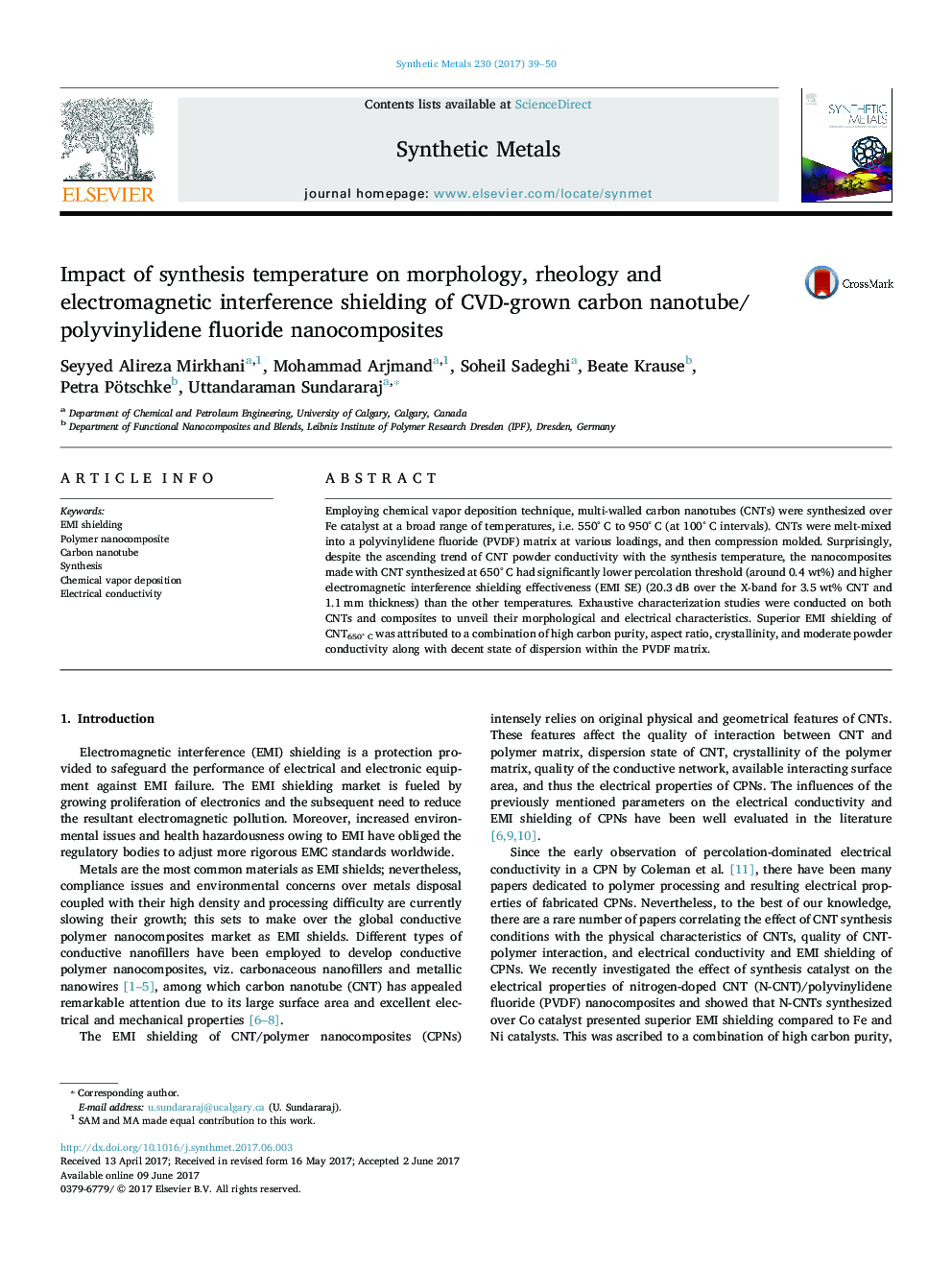| Article ID | Journal | Published Year | Pages | File Type |
|---|---|---|---|---|
| 5435386 | Synthetic Metals | 2017 | 12 Pages |
â¢Synthesis temperature has a huge impact on physical properties of carbon nanotubes.â¢There is an optimum synthesis temperature leading to superior EMI shielding.â¢Coupled optical and electron microscopy gives multi-scale image of filler dispersion.
Employing chemical vapor deposition technique, multi-walled carbon nanotubes (CNTs) were synthesized over Fe catalyst at a broad range of temperatures, i.e. 550° C to 950° C (at 100° C intervals). CNTs were melt-mixed into a polyvinylidene fluoride (PVDF) matrix at various loadings, and then compression molded. Surprisingly, despite the ascending trend of CNT powder conductivity with the synthesis temperature, the nanocomposites made with CNT synthesized at 650° C had significantly lower percolation threshold (around 0.4 wt%) and higher electromagnetic interference shielding effectiveness (EMI SE) (20.3 dB over the X-band for 3.5 wt% CNT and 1.1 mm thickness) than the other temperatures. Exhaustive characterization studies were conducted on both CNTs and composites to unveil their morphological and electrical characteristics. Superior EMI shielding of CNT650° C was attributed to a combination of high carbon purity, aspect ratio, crystallinity, and moderate powder conductivity along with decent state of dispersion within the PVDF matrix.
Graphical abstractDownload high-res image (149KB)Download full-size image
